Programming a vast array of some 288 features films, the Toronto International Film Festival offers a varied and overwhelming selection. One course of action is to see films by known directors or that have played at other festivals, with some allowance for happenstance, taking a chance on a movie based on the very brief synopsis on the festival’s website. Otherwise, without an agenda, you’re a deer in the headlights, faced with too many options. Luckily, my educational guesses paid off; I didn’t see one film I regretted, and I avoided second-guessing that I should be at another screening. Unlike one colleague, I never felt that I had seen the worst movie of my life.
The most anticipated movie, and the eventual winner of the People’s Choice Award, was Steve McQueen’s plainspoken and sobering 12 Years a Slave, which stays on point throughout its 133 minutes, depicting the brutality of slavery. The script is based on the 1853 account of Solomon Northup (Chiwetel Ejiofor), a free black man living with his family in upstate New York who was kidnapped and sold into slavery in the nation’s capital. The film successfully fulfills its single-minded mission: to wholly knock down the romanticized notions of the Old South, particularly in how Southern whites are depicted, showing instead how they were poisoned by the venality of the peculiar institution. Rather than moonlight and magnolias, the antebellum era is a state of paranoia. The drooping Spanish moss is about the only visual link that this film shares with Gone With the Wind.
The most pointed deconstruction involves the twisted interpretations of Bible verses, quoted to justify human bondage. The dialogue also counters movies like Django Unchained. The n-word is spoken liberally in its historical context, as a demeaning form of address, so even the temperate Canadian-born everyman played by Brad Pitt casually uses the word while expressing sympathy for how Solomon is treated. Throughout, the screenplay immerses the viewer with 19th-century speak: Solomon’s oath, “I promise you I will have satisfaction for this infraction;” or slave trader Paul Giamatti’s confession, “My sentimentality extends to the length of a coin.”
The film also accentuates the remarkable achievement of the 1977 TV miniseries Roots. Sure, when you catch it on late-night cable, the production values may look cheap, and because of broadcasting standards, it could only hint at the inherent barbarism, but over the course of a week, it also offers an even more complex and symbiotic portrait of Southern plantation life. McQueen’s film will be released by Fox Searchlight on October 18.
There were films from 70 countries, most of which were world premieres, so the draw of the familiar may explain the huge demand for the Sandra Bullock and George Clooney stranded-in-space epic Gravity, and seeing it in IMAX 3-D was a pull too hard to resist. It’s visually spectacular and beautiful, even when a space vessel is smashed to smithereens and debris hurls toward you. Director Alonso Cuarón and his son, Jonás, have written a tightly structured survival tale running less than 90 minutes: two astronauts are left adrift outside their shuttle after it has suffered damage from the explosion of a Russian satellite. Oxygen is running low, and both of them have to somehow reach the nearest space station. The film is lean, extravagant, but not ostentatious: high-class escapism 600,000 feet in orbit. The screenplay keeps the chain reaction of disasters moving, and the bass-heavy score with its heart-beating intonations might cause palpitations in viewers, no matter what age.
As if answering the complaint about the lack of depth in action-driven movies, the film provides enough nuance to give the audience a sense of who the protagonists are. (Though it does seem odd that after basic training and two weeks in space, Clooney’s character knows nothing about Bullock’s, and his role is the typical swaggering, unlucky-in-love charmer.) Besides the special effects, the film makes new inroads for mainstream films: this is the first big-budget action film headed by a 49-year-old actress, at least that I can remember. It opens everywhere on October 6.
Even without the visual effects, Gravity lifts off, but for two other films, 3-D was the main enticement. Beyond the Edge, a New Zealand documentary, honors native son Sir Edmund Hillary’s scaling of Mount Everest as part of the British effort in “the last great colonial project.” (As in Gravity, the lack of oxygen becomes an issue.) The 360-degree panoramic view at the top is breathtaking, but this step-by-step recounting of the historic feat, through the archival audio from the reserved Sir Hillary (a self-described “rough, old country boy”), is as dry as the dehydrated Himalayan air at 29,000 feet. Kevin Macdonald’s gripping Touching the Void (2003) still has not been displaced as the most exciting mountain-climbing film.

The capuchin monkey and the rain forest, the stars of Amazonia (Toronto International Film Festival)
In a visually resplendent French/Brazilian live-action co-production, a scene-stealer little capuchin monkey survives a plane clash and has to learn to fend for himself (I’m assuming it’s a boy monkey) in the richly verdant jungle of Amazonia. He confronts a variety of obstacles, including an angry, alpha-male monkey; a raging river; and a gargantuan anaconda. The anthropomorphic monkey has one of the widest emotional ranges of any actor in the festival, registering fear (seeing an alligator for the first time), puzzlement (upon meeting a giant anteater), or joy (finding a friend in a fellow monkey). He survives by observing and learning, including what mushrooms to avoid after a bad batch results in a psychedelic trip. All the episodic scenes lead to the big moment where he rips off his collar and runs deeper into the emerald green rain forest, wild and free. Run, little monkey, run! It’s a National Geographic special for the elementary school-age set or any Curious George fan. With no dialogue, Amazonia should have no problem breaking borders.
Though based on only a handful of films, the turn out from American independent films was strong. Nicole Holofcener arrived with the buoyant, but no less stringent, L.A. comedy of manners Enough Said, featuring a hugely likable but cluelessly narcissistic Julia Louis-Dreyfus as Eva, a well-meaning masseuse with a deprecating sense of humor. Divorced and with her only child about to go off to college, she tepidly begins dating Albert (the very vulnerable James Gandolfini), even though she’s not sure if she’s physically attracted to him—she confides in her best friend that “He’s kind of fat.” However, Eva neglects to tell him that his first wife is one of her clients and her new best friend. She only has to gently ask Albert’s ex, Marianne, a bohemian poet by way of Pottery Barn (Holofcener regular Catherine Keener), about Albert, and Marianne gushes, spilling all. Nor does Marianne realize that Albert is the new man in Eva’s life.
In a performance made for TV, Louis-Dreyfus reacts to her own lines as though waiting for a laugh track. You can understand why the-trying-too-hard Eva complains, “I’m tired of being funny,” and as in the director’s previous films, the solidly middle-class characters are effortlessly flippant, but the screenplay never vilifies Eva’s actions. Holofcener leaves it to the audience to be amazed at the next thoughtless move she makes. Gandolfini has a breezy presence, at home in his skin. Even without the foreknowledge of the actor’s recent death, the film has a lingering sense of regret, despite its Hollywood ending. It’s now in theaters.
By chance, the festival was something of a mini-gay film fest. It presented many high quality films that are now up for grabs for GLBT festivals or for anyone attracted to thoughtful filmmaking. The most endearing film I saw out of 36 films was Bad Hair from Venezuela, which was also an introduction to its director, Mariana Rondón. Like many of the films that I admired, it was shot guerrilla style, in Caracas. Ten-year-old Junior’s mother, Marta (a steely Samantha Castillo), a single woman in her early 30s, bristles at the way her son dances and at his habit of locking himself in the bathroom to preen before the mirror and straighten out his thick curly hair. However, his grandma knows the score. She reassures Marta that she doesn’t need to fear about Junior joining a gun-wielding gang; he just wants to look good, to style his hair like the contestants in the Miss Venezuelan beauty pageant that he and his best friend watch.
What really drives Marta up the wall is the boy’s obvious crush on a handsome grocer, while Junior is jealous by the attention and intimacy she lavishes on his light skin baby brother. In between scenes of Junior’s determination to find the right hair relaxer and those of his grandma teaching him dance moves are the starkly sinister moments of Marta trying to make her son straight (“Men don’t sit down to pee.”). As Junior, Samuel Lange is a find.
Among the documentaries, The Dog extends convicted bank robber John Wojtowicz’s 15 minutes of fame into an unexpurgated blast of gay 1970s New York. (Oh, so that why he’s called Little John.) Filmed over a period of years, he physically shrinks before your eyes after his diagnosis of skin cancer. A self-professed pervert, Wojtowicz boasts of four wives and 23 girlfriends as proof. Among his many personas, he was a Goldwater delegate in 1964, a draftee in Vietnam, and a member of the Gay Activist Alliance soon after Stonewall. In 1972, he and two co-conspirators robbed a bank, partially to pay for a sex-change operation for Wojtowicz’s lover, Ernie. (A gay priest had married them in Greenwich Village, seen in very grainy video footage.) The stand-off with police, which resulted in the taking of hostages, was the basis of Sidney Lumet’s seminal 1975 drama, Dog Day Afternoon, starring Al Pacino, a physical match for Wojtowicz.
Wojtowicz holds nothing back and basks in the attention of the camera, but he’s not the most self-aware or reflective subject, and the film is less successful at connecting his family’s personal history to his contention that he’s like the gay Babe Ruth for beating the system. (How? He served timed in prison.) The film stands on its own, though it will have a stronger appeal for those who have seen Lumet’s film.
Reportedly, acclaimed Paris-based author-turned-filmmaker Abdellah Taïa is the only openly gay Moroccan and Arab writer, and he adapts his autobiographical novel for his debut film, the beautifully observed and melancholic memory piece Salvation Army. From the start, the tone is frank: while on an errand, 15-year-old Abdellah (played by Saïd Mrini, whose eyes take in everything) is pulled aside by an older man into a construction site, where they have sex. The teen’s father doesn’t overlook the male attention directed toward his son. In one instance, he tells Abdellah to spend time with an overly friendly fruit vendor. Father waits while they do their business, and later, the boy brings home the bacon, err, watermelon. Yet Abdellah’s not a passive victim; he seeks out men, sometimes making the first move, often looking for no more than a sign of affection.
The film would already be daring in its depiction of teenage homosexuality, but it ventures into precarious waters when Abdellah crosses the line from fraternal affection toward the erotic with his sexual idolizing of his older, muscular brother. It’s here that the direction turns literal, showing what the obedient and taciturn teen feels: he lies on his brother’s bed and caresses the pillow. At one point, he steals his brother’s shorts for a sniff. (In James Franco’s Child of God, there’s also a lot of underwear sniffing: the visual motif of the year?)
The tenuous storyline jumps ahead 10 years, when Abdellah returns to Morocco with an older Swiss man. What we have seen earlier has formed the guarded, self-loathing adult. The titular evangelical Protestant mission later provides the older Abdellah (played by the glum Karim Ait M’hand) a refuge from homelessness in Geneva. It’s the one place where the cash-strapped student can find a place to sleep and eat. Though the film was made with European funding and has the tone of an impressionistic international art-house piece, its point of view feels like it’s from the inside.
Robin Campillo has co-written screenplays directed by Laurent Cantet (The Class). In his fascinating and suspenseful Eastern Boys, he challenges the viewer’s idea of what a consensual, mature relationship looks like. This film feels like four movies in one. The opening segment is filmed verité style in Paris’s Gare du Nord train station as Eastern European teens scope the scene, looking for tricks and avoiding the police. The second chapter is a nightmare for 50-something Daniel (Olivier Rabourdin, with the aloofness of Kevin Spacey), who has arranged a tryst (for 50 euros) with lanky Ukrainian Marek (Kiril Emelyanov), who speaks some English and little French. What happens to the middle-class john could have been avoided if he had only looked through his door’s peep hole before answering the door. He becomes a hostage at his own party, so to speak, when Marek’s posse of lost boys shows up—say au revoir to the flat-screen TV. But then Marek returns days later: Is the 50 euros offer still available? In the third segment, Daniel looks forward to the kid’s weekly visits but advises Marek to leave the gang and insists on a flat monthly rate. He’s the Good Samaritan-turned-sexual opportunist. The Dickensian last part centers on the Section-8-like hotel where the boys, none of whom are in France legally, hole up. Marek’s escape plan builds to an action-packed climax.
Campillo’s work is one of the most tough-minded films about immigration into Europe, though Daniel’s passivity can be puzzling, and you’ll be left wanting to know more about how the kids came illegally to France. Both this film and Salvation Army portray sexuality in a complicated and messy manner, frankly, though not explicitly. You won’t find yourself wondering what’s simulated and what isn’t, unlike in the Palme d’Or–winning Blue Is the Warmest Color, which is now making the rounds at major festivals like Toronto (also at TIFF, Stranger by the Lake, which has more full-frontal male nudity than any film outside of porn). Nor do these two films have an in-your-face approach to nudity (there’s very little). They’re provocative without being prurient.

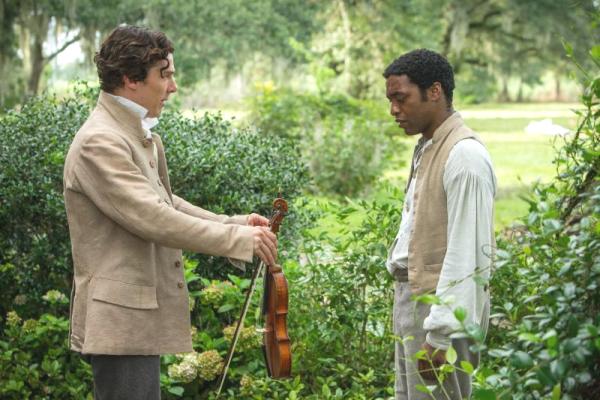
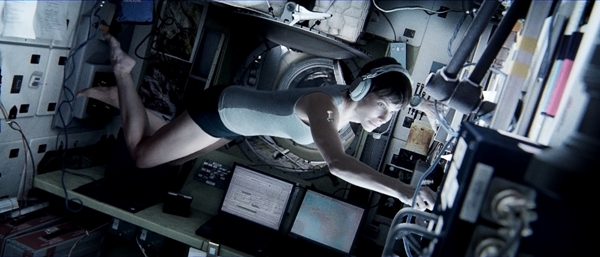
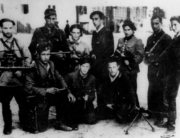

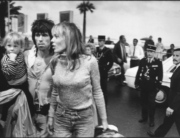

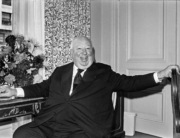
Great review!! BAD HAIR was the second most endearing film (after KEEP ON KEEPING ON)of the 52 that I saw at this past year’s Tribeca Film Festival. Surely a Top Ten of 2014 for me with some pretty great stuff—-BOYHOOD, IDA, INTERSTELLAR, UNDER THE SKIN, et al.